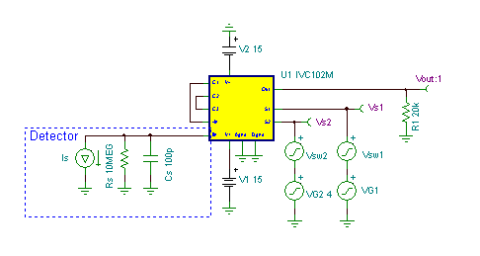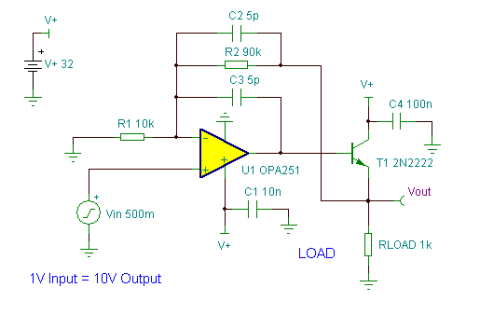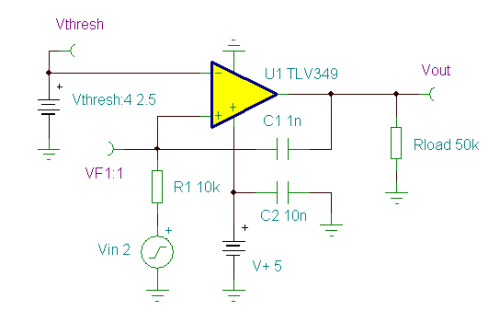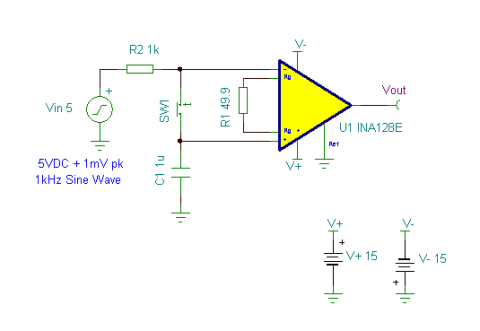Comparator Window Settings
Conventional window comparators suffer interaction between the width and the center of the window.
This makes adjusting these parameters time consuming.
By using a precision dual 100uA current reference (REF200), this interaction is eliminated.
The width of the comparator window is determined by the reference current and the value of P1: V = 100uA * 20k.
The DC voltage of the window center is set by the % rotation of the potentiometer P1.
With the pot at its center (50%), the center of the comparator window is at zero volts– thus the window is +/-1V. The window center adjustment is illustrated below. (Circuit is created by Neil P. Albaugh TI- Tucson)
Comparator Window Settings circuit:
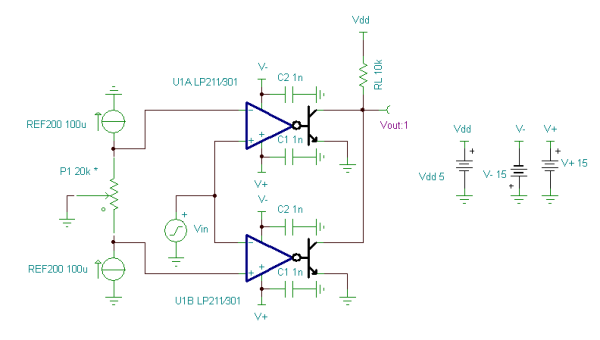
Online Simulation of the Comparator Window Settings Circuit
The great feature of the TINA circuit simulator that you can analyze this circuit immediately with TINACloud the online version of TINA. Of course you can also run this circuit in the off-line version of TINA.
Click here to invoke TINACloud and analyze the circuit yourself, or watch our tutorial video!
You can send this link to any TINACloud customers and they can immediatelly load it by a single click and then run using TINACloud.
Michael Koltai
www.tina.com

